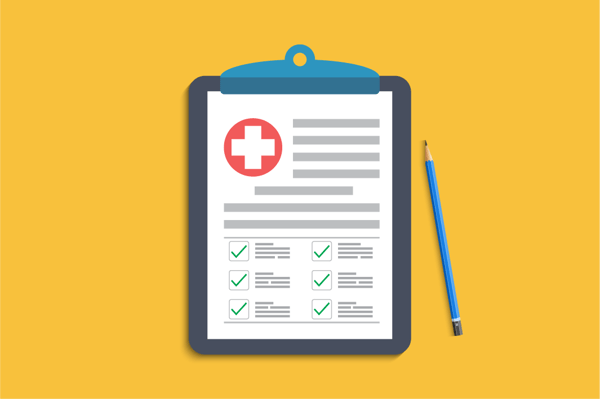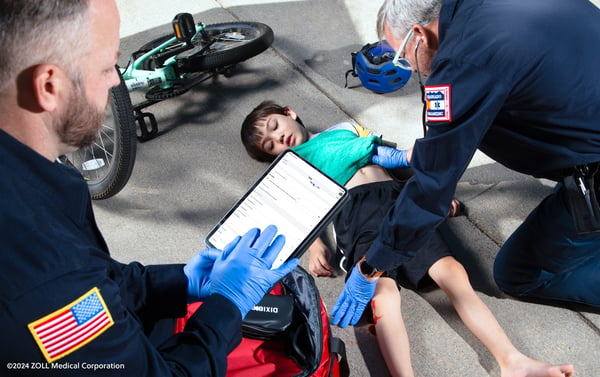Chart Smarter: Why One EMS Agency Ditched Paper for Mobile Tech
How Using Dispatch Protocols Can Avoid Revenue Loss and Compliance Risk
(4 min read) Dispatch is an area that seems to generate a lot of misunderstandings and confusion, especially as it relates to Medicare reimbursement

(4 min read) Dispatch is an area that seems to generate a lot of misunderstandings and confusion, especially as it relates to Medicare reimbursement. While the rules are straightforward enough, the proper level of service to bill is sometimes based on the type of dispatch – which the rules and reality don’t always match.

The Ideal
“In a properly established priority dispatch environment, the code and response areas of the system work together to ensure that EMDs choose the most appropriate clinical determinant and assign the most appropriate response.”
- The Principles of Emergency Dispatch, Third Edition
In other words, dispatch protocols would establish what response is most appropriate for each condition- Immediate? ALS? BLS? Then, based on the patient condition that is reported to dispatch, the appropriate response is sent to the patient.
For example, if a caller reports a patient with a ground level fall with an injury to a not dangerous body area and dispatch protocols define that as a BLS – Immediate response, a BLS crew would respond right away to the call.
The Reality
Many EMS systems don’t have dispatch protocols at all. Even if they do, often the protocols aren’t used effectively. Along with that, many systems respond to all calls immediately with an ALS crew. Using the previous example, if a caller reported a patient with a ground level fall with an injury to a not dangerous body area and there were no dispatch protocols, an ALS crew would respond right away, even though a BLS crew could have been appropriate.
This practice can result in improper utilization of resources, inability to properly bill at a higher level of service, and exposure to compliance risk.

Medicare Rules
Medicare requirements are Federal law. Additionally, for most EMS agencies Medicare is the biggest payer, so it’s important to have a solid understanding of how those rules apply to dispatch, billing and compliance.
Medicare defines an emergency response as a 911 call or an equivalent and an immediate response in which the ambulance service takes the steps necessary to respond as quickly as possible. In addition, based on the nature of the call reported to dispatch it must be reasonable for the dispatcher to issue an emergency response.
By Medicare’s standards, whether a transport can be billed as an emergency or a non-emergency is decided before the ambulance arrives at the patient. Medicare reimburses emergency transports at a higher rate because of the increased cost of readiness associated with emergency responses.
Let’s say an ambulance is dispatched for a scheduled pick-up of a patient at a Skilled Nursing Facility. When the crew arrives, the patient is in cardiac arrest and is transported to the hospital. This transport must be billed to Medicare as a non-emergency based on the dispatch. The reverse is also true, if a call is properly dispatched as an emergency, but the patient’s actual condition on scene isn’t emergent in nature, the call can still be billed to Medicare as an emergency (assuming all coverage criteria is met) based on the emergency dispatch.
Developing Dispatch Protocols
Whether or not your agency has control over dispatch or plans to change actual responses, developing dispatch protocols can improve compliance and increase billing accuracy. The protocols should determine an appropriate response based on the patient’s reported condition at dispatch factoring in the severity, symptoms and duration of the complaint.
You can start with a commercial dispatch product or create your own protocols from scratch. Regardless of where you start, you must customize your protocols. Even commercially available products are not intended to be used as-is. When determining the appropriate response based on patient condition, remember that there are four levels of service to consider: ALS Emergency, BLS Emergency, ALS Non-Emergency and BLS Non-Emergency. Don’t fall into the trap of defining all ALS conditions as emergencies and all BLS conditions as non-emergencies!
Once your protocols are complete, have your agency’s medical director review and approve. Then, the protocols need to be shared with your billing agency or billing staff so they can be utilized to determine the proper level of service for billing.

Avoiding Revenue Loss and Compliance Risk
Having dispatch protocols in place helps your agency ensure that it is billing appropriately on every claim. Proper application of dispatch protocols can result in higher reimbursement for your agency in circumstances where the patient’s reported condition at dispatch and actual condition on scene don’t match. Utilizing protocols also means there are no mistakes or miscommunication as to what constitutes an emergency dispatch and response.
There has been a significant increase in recent years of enforcement targeting emergency billing. Protect your agency from revenue loss and compliance risk with dispatch protocols.
Related Posts
The End of Delayed Documentation
4 Must-have Data Points for Dispatch-Billing Alignment and Maximum Reimbursement
ZOLL Pulse Blog
Subscribe to our blog and receive quality content that makes your job as an EMS & fire, hospital, or AR professional easier.
ZOLL Pulse Blog
Subscribe to our blog and receive quality content that makes your job as an EMS, fire, hospital, or AR professional easier.




